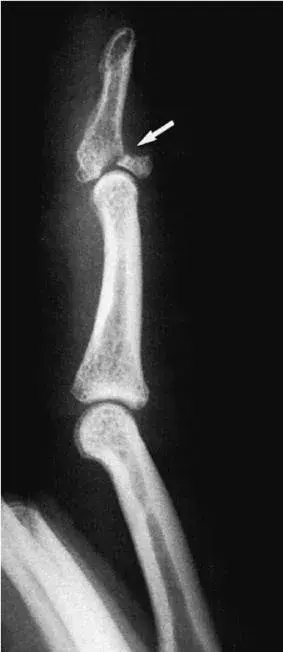Most Missed Question in Pediatric Emergency Medicine This Week
Two-person bag-mask ventilation is the critical next step in pediatric airway emergencies when single-person BVM fails, even in scenarios involving failed intubation attempts or severe hypoxia.
A 14 mo boy triplet born at 29 weeks gestation with history of tetralogy of Fallot and seizures presents with concern for breakthrough seizures. He was given IN midazolam by his family. He was given a second dose of midazolam by EMS and subsequently became apneic and required bag mask ventilation.
A pre-hospital intubation attempt with a 3.5 mm ETT after administration of IV fentanyl and rocuronium was unsuccessful. The paramedic states that intubation failed secondary to an “anterior airway”.
Bag mask ventilation by EMS is in progress upon arrival to the ED. Temp 37.9°C HR 165 RR 20 (bagging), SpO2 76% BP 90/62. The patient has diffusely coarse, diminished breath sounds bilaterally with poor chest rise. No secretions are visible in nose or oropharynx.
What would be the next most appropriate step in management?
Answer Options:
- Chest x-ray
- Endotracheal Intubation
- Initiate 2-person mask ventilation
- IV rocuronium
The correct answer is #3, the common miss here is #2. Optimize oxygenation first.
Why This Question Is Often Missed
- Clinicians fixate on “definitive airway” (intubation) rather than optimizing mask ventilation first.
- Misunderstanding that neuromuscular blockade (rocuronium) will improve intubating conditions despite ongoing hypoxia.
What the Distractors Indicate
| Option | What It Tests / Implies | Why It’s Wrong Here |
|---|---|---|
| Chest x‑ray | Checking ETT placement or diagnosing pathology | Patient is critically hypoxic—imaging must wait until ventilated. |
| Endotracheal Intubation | Desire to secure definitive airway | Initial intubation just failed; need to optimize oxygenation first. |
| Initiate 2‑person mask ventilation | Team‑based BVM to improve seal and tidal volumes | — |
| IV rocuronium | Paralysis to facilitate intubation | Paralysis without assured ventilation risks complete apnea. |
High-Yield Pearl
In any pediatric “can’t intubate, can’t ventilate” scenario, a two‑person mask technique is the first step to restore oxygenation.
Core Learning Objectives for Pediatric Emergency Medicine
- Demonstrate proper escalation from single‑ to two‑person bag‑mask ventilation in pediatric respiratory failure.
- Recognize when neuromuscular blockade is contraindicated without a secured airway or adequate mask ventilation.
The “Test Trick” at Play
The question lures you toward a “definitive airway” (intubation or paralysis) by highlighting multiple failed attempts, but the underlying priority per PALS is restoring oxygenation via optimized bag‑mask ventilation before further invasive steps.
Additional Peds EM Practice Questions and Remediation
Learning Objectives: two‑person mask ventilation; safe use of paralytics
Peds EM Practice Question 1
A 5‑year‑old with status asthmaticus becomes fatigued and hypoxic despite nebulized albuterol. Single‑person BVM yields minimal chest rise. What’s next?
A. IV succinylcholine
B. Two‑person bag‑mask ventilation
C. Rapid sequence intubation
D. Chest radiograph
Answer and Remediation
- If you chose B: Correct response! Two‑person BVM improves seal and tidal volume.
- If you chose A/C: Review: Paralysis or RSI without effective BVM risks complete apnea.
- If you chose D: Review: Imaging delays critical ventilation.
Peds EM Practice Question 2
A 2‑year‑old with bronchiolitis is apneic after IV sedation. Single‑person BVM fails. Your next step is:
A. Endotracheal intubation
B. Two‑person bag‑mask ventilation
C. IV rocuronium
D. Apply CPAP mask
Answer and Remediation
- If you chose B: Correct response! First optimize manual ventilation.
- If you chose A/C: Review: Securing airway prematurely or paralysing worsens hypoxia.
- If you chose D: Review: CPAP mask may not seal on unconscious child.
Peds EM Practice Question 3
During neonatal resuscitation, you note a poor mask seal. Despite repositioning, chest rise is absent. Next:
A. Nasal trumpet insertion
B. Two‑person mask ventilation
C. Open surgical airway
D. IV midazolam
Answer and Remediation
- If you chose B: Correct response! Two‑person technique addresses seal issues.
- If you chose A/D: Review: Adjuncts and sedation don’t fix seal.
- If you chose C: Review: Surgical airway is extremely rare in neonates.
Peds EM Practice Question 4
A 3‑year‑old with altered mental status receives single‑person BVM but remains hypoxic. The team should:
A. Start CPAP
B. Switch to two‑person bag‑mask ventilation
C. Give IV paralytic
D. Obtain chest x‑ray
Answer and Remediation
- If you chose B: Correct response! Improves ventilation immediately.
- If you chose A/D: Review: CPAP and imaging delay rescue ventilation.
- If you chose C: Review: Paralysis without assured ventilation is unsafe.
Peds EM Practice Question 5
An intubation‑ready child develops laryngospasm post‑sedation and C‑section delivery. Single‑person BVM inadequate. Action?
A. Propofol bolus
B. Two‑person mask ventilation
C. IV rocuronium
D. Emergent tracheostomy
Answer and Remediation
- If you chose B: Correct response! Two‑person BVM overcomes spasm.
- If you chose A: Review: Sedation deepens without improving ventilation.
- If you chose C/D: Review: Paralysis/tracheostomy before ventilation fails the ABCs.
Mini Case Discussion Prompt
“How would your approach differ between a term infant with congenital airway anomaly versus a preterm with poor respiratory drive when initial BVM fails—what factors guide your decision to proceed to advanced airway or surgical airway?”
This question appears in Med-Challenger Pediatric Emergency Medicine 3rd Edition Exam Review with CME
Try for free and save. Ace your exams and meet your CME/MOC requirements.
No matter your program, no matter the size, Med-Challenger for Groups and Institutions can better prepare your program or group, fulfill industry requirements, and increase test scores.








